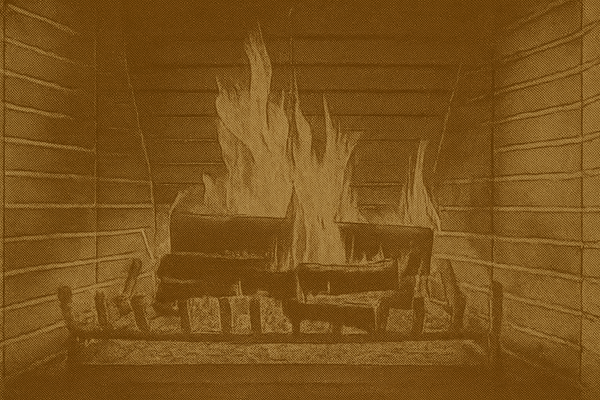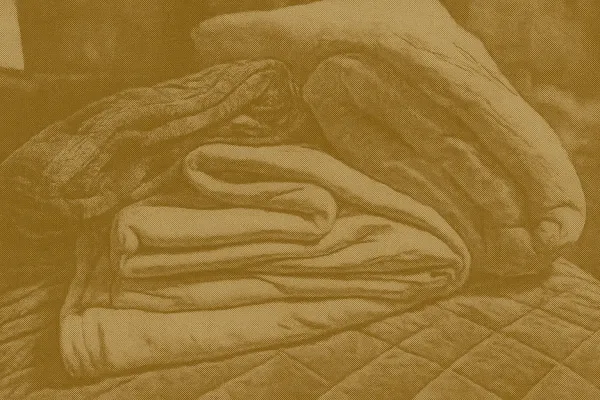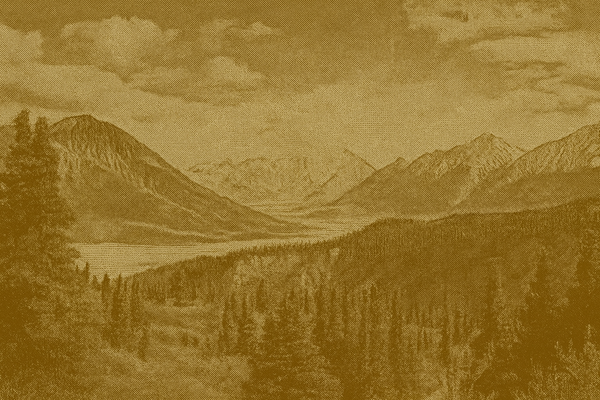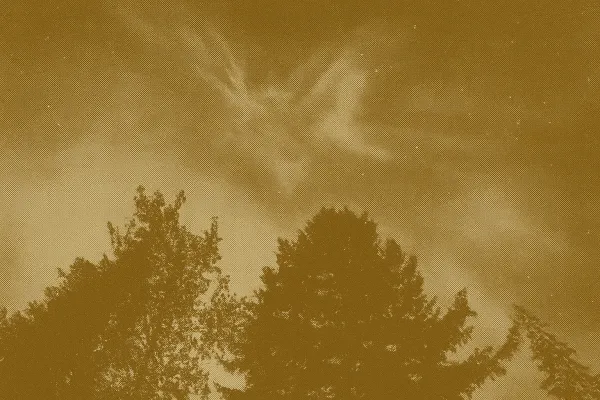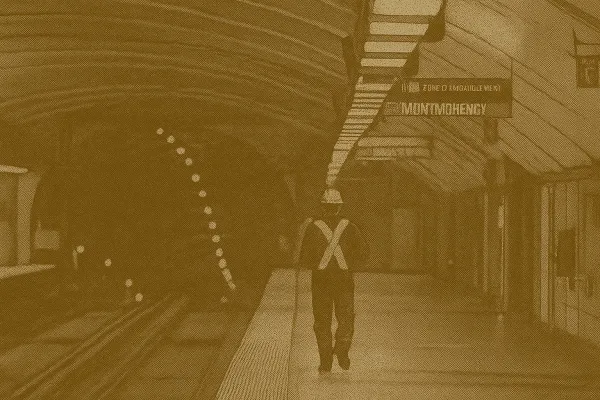Heads up: some of the links in this post are affiliate links. That means if you click and purchase, we may get a commission. It’s how we keep this site running without cluttering it with ads.
Introduction: Embracing Winter Warmth
As the crisp autumn air signals the inevitable arrival of Canada's colder months, many of us start dreaming of cozy evenings by a crackling fire. There's nothing quite like the warmth and ambiance a fireplace brings to a home when the snow is falling outside. But before you light that first celebratory blaze, it's absolutely crucial to ensure your fireplace is ready for the long winter ahead. Taking the time to properly prepare a fireplace for winter in Canada isn't just about comfort; it's about safety, efficiency, and peace of mind.
This comprehensive guide will walk you through everything you need to know, whether you have a traditional wood-burning hearth or a convenient gas fireplace. We'll cover all the essential steps, from cleaning and inspection to safety checks and efficiency tips, all designed to help you enjoy your fireplace safely and effectively throughout the Canadian winter.
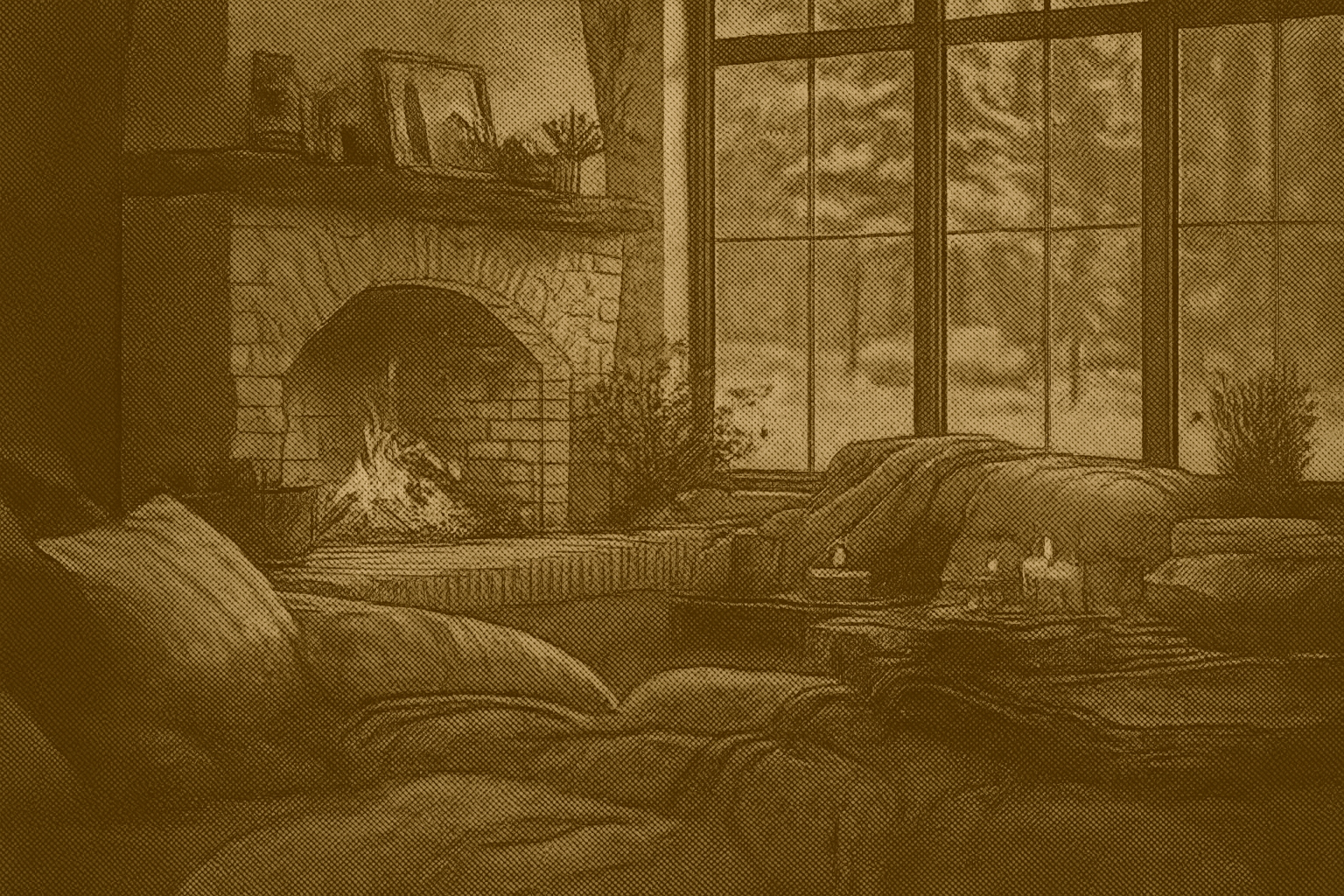
Essential Upkeep for Your Wood Fireplace
Maintaining your wood-burning fireplace is key to its longevity and safe operation, especially here in Canada where we rely on them so heavily. Think of it like preparing your car for winter; a little preventative care goes a long way. This involves more than just sweeping out ash; it's about a thorough inspection of the entire system.
Start by looking at the firebox itself. Are there any cracks in the firebrick or mortar? Small cracks can often be repaired with refractory cement, but larger damage might require professional attention. Check the damper for proper operation. It should open and close smoothly and seal tightly when shut to prevent heat loss when the fireplace isn't in use. A loose or damaged damper can significantly reduce your home's energy efficiency.
Related: Best Winter Boots for Canada: Stay Warm and Dry This Winter
Next, turn your attention to the chimney cap and flashing. The chimney cap, often overlooked, protects your chimney from rain, snow, and animal intrusion. Ensure it's securely in place and free of damage. The flashing, which seals the chimney where it meets the roof, is critical for preventing water leaks into your home. Look for any signs of rust, cracks, or separation. If you spot any issues here, it's often best to call a professional roofer or chimney sweep, as working on roofs can be hazardous.
Finally, consider the condition of your hearth and surrounding areas. The hearth should be free of combustible materials and any loose tiles or stones should be re-secured. This entire system works together, and neglecting one part can compromise the safety and performance of the whole. Regular upkeep ensures your wood fireplace provides reliable warmth all season long.
Getting Your Wood Fireplace Sparkling Clean
Before the first big snowfall, a thorough cleaning of your wood fireplace is absolutely essential. This isn't just about aesthetics; it's a critical safety measure. Over time, creosote, a highly flammable residue, builds up in your chimney flue. Ignoring this buildup is a leading cause of chimney fires.
Here’s how to approach a good clean
Gather Your Tools: You'll need a sturdy wire brush (sized for your flue), an extendable rod, a heavy-duty vacuum, a shovel, a bucket, and a drop cloth. Don't forget safety gear like gloves and a dust mask.
Protect Your Home: Lay down drop cloths generously around the fireplace opening and cover any nearby furniture. Close off the room as much as possible to contain dust.
Clean the Firebox: Start by removing all ash and debris from the firebox. Use your shovel and bucket, then vacuum up any remaining fine ash. Inspect the firebox walls and grate for any soot buildup and scrub them clean.
Tackle the Chimney: This is the most important part. You can clean from the top down (if you're comfortable and safe on your roof) or from the bottom up.
Top-Down: From the roof, insert the brush attached to the rod into the flue, working it up and down to dislodge creosote. Add rod sections as you go.
Bottom-Up: From inside the firebox, push the brush up into the flue, extending the rods as you go. This method is often easier for homeowners but can be messier.
As you clean, creosote and soot will fall into the firebox.
Final Cleanup: Once you've brushed the flue, vacuum up all the fallen debris from the firebox. Clean the damper and smoke shelf thoroughly.
While many homeowners can handle basic cleaning, it's often recommended to hire a certified chimney sweep, especially if you haven't had your chimney cleaned in a while or if you burn a lot of wood. They have specialized tools and expertise to spot issues you might miss.Professional inspections and cleanings are crucial for preventing hazards.
Readying Your Gas Fireplace for the Chill
Gas fireplaces offer convenience and warmth without the mess of wood, but they still require attention before the Canadian winter sets in. Preparing your gas unit ensures it operates safely and efficiently when you need it most.
Read Your Manual: This is always the first step. Your specific model might have unique requirements or troubleshooting tips. Keep it handy!
Check the Gas Line and Connections: Visually inspect the gas line leading to your fireplace for any kinks, damage, or corrosion. More importantly, check the connections for any signs of leaks. You can do this by mixing a bit of dish soap with water and applying it to the connections. If you see bubbles forming, you have a leak. If you suspect a gas leak, turn off the gas supply immediately and contact your gas utility company or a certified gas technician. Do not attempt to fix a gas leak yourself.
Clean the Burner and Pilot Light Area: Over time, dust and debris can accumulate around the burner and pilot light, affecting performance. Use a soft brush or a vacuum with a hose attachment to gently clean these areas. Be very careful not to disturb the gas logs or ceramic embers, as they are often fragile.
Inspect the Logs/Embers: Gas logs are designed to mimic real wood, but they can deteriorate over time. Check for any cracks, chips, or discolouration. If they're damaged, they might not distribute heat properly or could even pose a safety risk. Replace them if necessary.
Check the Venting System: For direct-vent or B-vent units, ensure the exterior vent cap is clear of any obstructions like bird nests, leaves, or snow buildup. A blocked vent can lead to dangerous carbon monoxide accumulation inside your home.
Test Ignition and Operation: Turn on your fireplace and observe the flame. It should be mostly blue with yellow tips. If the flame is predominantly yellow or orange, it could indicate an issue with the gas-to-air mixture, which might require a technician's adjustment. Listen for any unusual noises.
Carbon Monoxide Detector: Ensure your carbon monoxide detector is working and has fresh batteries. This is non-negotiable for any home with a gas appliance.
While many of these checks can be done by a homeowner, it's highly recommended to have a certified gas technician inspect your gas fireplace annually. They can perform more in-depth checks, clean internal components, and ensure everything is operating safely and efficiently.
Prioritizing Safety Around Your Fireplace
Safety measures are critical for Canadian homes with fireplaces, whether wood-burning or gas. A fireplace is a wonderful amenity, but it demands respect and careful attention to prevent accidents.
Install and Test Detectors: This is paramount. Every home with a fireplace needs working smoke detectors and carbon monoxide (CO) detectors.
Smoke Detectors: Install them on every level of your home, especially near sleeping areas. Test them monthly and replace batteries annually.
Carbon Monoxide Detectors: CO is an invisible, odourless, and deadly gas. Place detectors near sleeping areas and on every level. Test them regularly.
Keep Combustibles Clear: Maintain a clear zone of at least three feet (about one metre) around your fireplace. This means no rugs, furniture, curtains, newspapers, or anything flammable within this perimeter. This is a simple rule that drastically reduces fire risk.
Use a Fire Screen or Glass Doors: For wood-burning fireplaces, a sturdy fire screen or glass doors are essential to prevent sparks and embers from escaping the firebox and igniting nearby materials. Even with gas fireplaces, a screen can prevent accidental contact with hot surfaces.
Proper Ash Disposal (Wood-Burning): Never dispose of ashes in a plastic bag or cardboard box. Even seemingly cold ashes can contain hidden embers that can reignite hours or even days later. Always scoop ashes into a metal container with a tight-fitting lid, then move the container outdoors, away from any structures or combustible materials, for at least 72 hours before disposal.
Supervise Children and Pets: Young children and pets are naturally curious. Never leave them unsupervised around an active fireplace. Consider a hearth gate if you have toddlers.
Know Your Fire Extinguisher: Have a working fire extinguisher readily accessible and know how to use it. Make sure it's rated for Class A (wood, paper) and Class C (electrical) fires, which are common in homes.
Educate Your Household: Ensure everyone in your home understands fireplace safety rules, especially regarding what not to burn and how to react in case of an emergency.
Following these guidelines will significantly enhance the safety of your home and family when enjoying your fireplace.
Maximizing Warmth and Efficiency
When the Canadian winter truly bites, you want your fireplace to deliver maximum warmth without wasting energy. Getting the most heat from your fireplace involves a few smart strategies.
Choose the Right Fuel (Wood-Burning)
Seasoned Wood: This is paramount. "Seasoned" means wood that has been cut, split, and dried for at least 6-12 months (or longer for hardwoods). It should have a moisture content below 20%. Seasoned wood burns hotter, cleaner, and more efficiently, producing less creosote. Unseasoned (green) wood smoulders, creates excessive smoke, and wastes energy.
Hardwoods vs. Softwoods: Hardwoods like oak, maple, and birch burn longer and produce more heat per cord than softwoods like pine or spruce. While softwoods can be good for kindling or quick fires, hardwoods are better for sustained warmth.
Avoid Treated or Painted Wood: Never burn treated, painted, or composite wood products. They release toxic fumes and can damage your chimney.
Proper Fire Starting and Management (Wood-Burning)
Top-Down Fire: Instead of the traditional bottom-up method, try building a top-down fire. Place larger logs at the bottom, then progressively smaller pieces, with kindling and a fire starter on top. This method burns cleaner, produces less smoke, and requires less tending.
Airflow Control: Once the fire is established, adjust your damper and air vents to control the burn rate. Too much airflow leads to a fast, inefficient burn; too little creates a smouldering fire with excessive smoke and creosote. Aim for a lively, dancing flame, not a roaring inferno or a sleepy, smoky glow.
Maintain Your Damper: For both wood and gas fireplaces, ensure your damper seals tightly when not in use. An open or leaky damper acts like an open window, allowing warm air to escape up the chimney, dramatically reducing your home's overall heating efficiency. Consider a top-sealing damper for wood fireplaces, which provides a much tighter seal than traditional throat dampers.
Consider a Heat-Powered Fan: For wood-burning fireplaces, a heat-powered stove fan can help circulate the warm air produced by your fireplace into the room, rather than letting it rise straight to the ceiling. These fans operate silently without electricity.
Insulate Your Chimney (If Applicable): If you have an older, unlined masonry chimney, professional insulation or a stainless steel liner can significantly improve drafting and reduce heat loss. This is a job for a certified chimney professional.
By focusing on these aspects, you can ensure your fireplace isn't just a decorative feature but a truly effective heat source, helping to keep your home warm and your energy bills manageable during those long, cold Canadian nights.
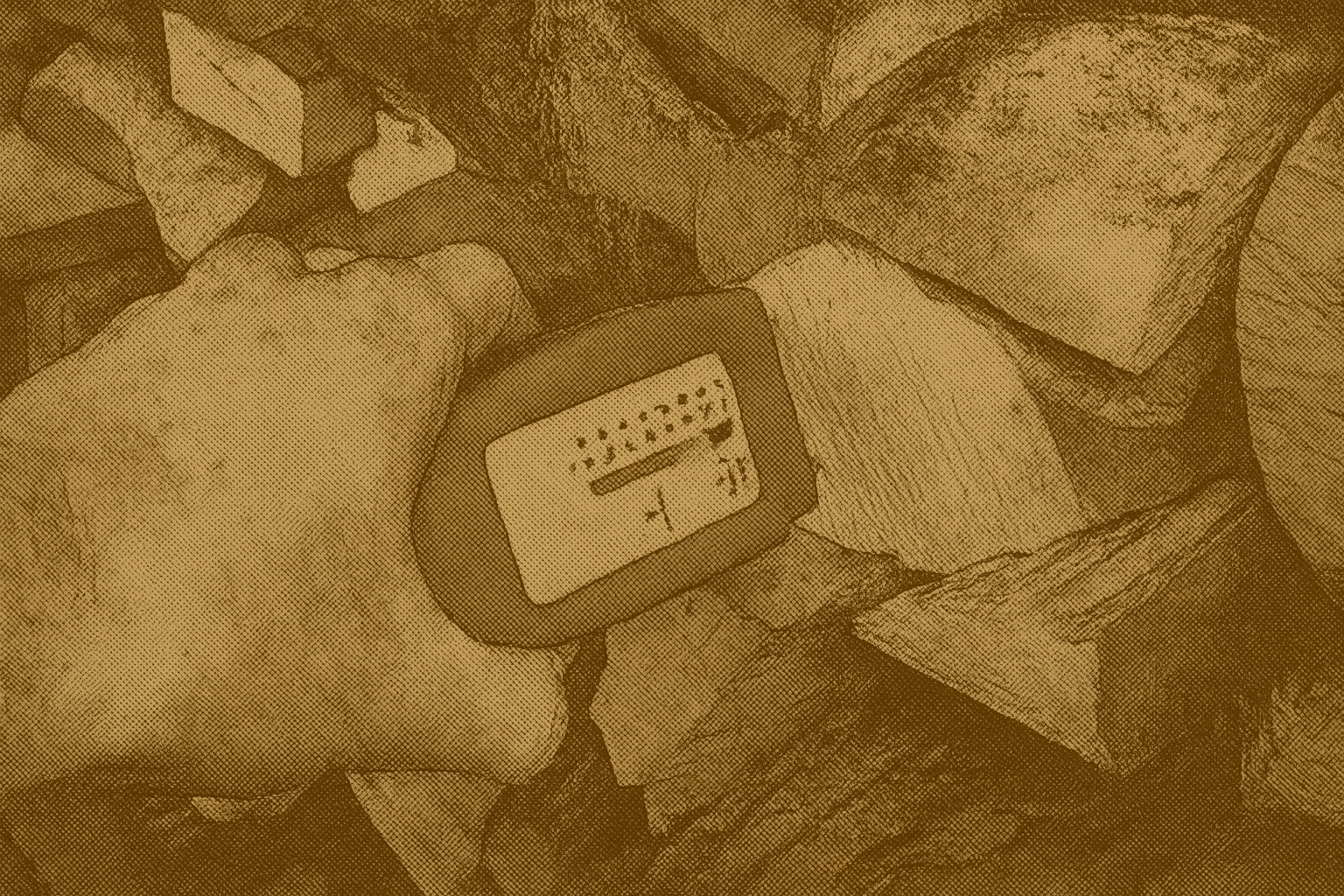
Your Winter Fireplace Readiness Guide
Getting your fireplace ready for winter doesn't have to be overwhelming. A step-by-step plan for winter preparation helps ensure you don't miss any critical details. Here’s a comprehensive guide to help you get organized:
For All Fireplaces (Wood and Gas)
Schedule Professional Inspection/Cleaning:
Wood: Book a certified chimney sweep for an inspection and cleaning, especially if you burn frequently.
Gas: Arrange for a certified gas technician to inspect your unit annually.
Check Carbon Monoxide and Smoke Detectors: Test all units. Replace batteries. Ensure proper placement throughout your home.
Clear the Area: Remove all combustible materials within a one-metre radius of the fireplace opening. Ensure the hearth is clear and stable.
Inspect Damper/Vent: Ensure the damper (wood) or vent cap (gas) operates smoothly and seals tightly when closed. Check exterior vents for obstructions (nests, leaves, snow).
For Wood-Burning Fireplaces
Inspect Firebox: Look for cracks in firebrick or mortar. Repair as needed with refractory cement. Check the condition of the grate.
Clean Firebox and Flue: Remove all ash and debris. Thoroughly brush the chimney flue to remove creosote buildup.
Inspect Chimney Cap and Flashing: Ensure the cap is secure and undamaged. Check flashing for rust, cracks, or separation.
Prepare Firewood Supply: Ensure you have a sufficient supply of well-seasoned wood. Store wood in a dry, elevated location, away from your home. Bring in only enough wood for a day or two at a time to avoid pests.
Gather Tools: Have a metal ash bucket with a lid ready. Ensure you have a shovel, poker, tongs, and a sturdy fire screen.
For Gas Fireplaces
Inspect Gas Line and Connections: Visually check for damage. Perform a soap-and-water leak test on connections.
Clean Burner and Pilot Light: Gently remove dust and debris.
Inspect Gas Logs/Embers: Check for damage; replace if necessary. Ensure they are correctly positioned.
Test Ignition: Turn on the fireplace and observe flame colour (mostly blue with yellow tips). Listen for unusual noises.
By following this comprehensive guide, you'll be well-prepared to enjoy your fireplace safely and efficiently throughout the Canadian winter. This systematic approach helps ensure you cover all bases for a worry-free heating season.
Preventing Chimney Fires: A Critical Step
Keeping chimney fires at bay is perhaps the most vital aspect of fireplace readiness, especially for wood-burning units. Chimney fires can be incredibly dangerous, leading to extensive damage to your home or even loss of life. They are often preventable with proper care and vigilance.
The primary culprit behind chimney fires is creosote buildup. Creosote is a highly combustible substance that forms as a byproduct of burning wood. When wood burns, especially unseasoned wood or when there isn't enough airflow, the smoke carries unburnt particles and vapours up the chimney. As these cool, they condense on the inner walls of the flue, forming creosote. It can range from a flaky, black deposit to a tar-like, hardened glaze, all of which are extremely flammable.
Here's how to minimize the risk
Regular Cleaning: As discussed, this is non-negotiable. A professional chimney sweep can remove creosote effectively. The frequency depends on how often you use your fireplace and what you burn. If you burn daily, you might need cleaning every year. If you use it occasionally, every two to three years might suffice, but an annual inspection is always a good idea.
Burn Seasoned Wood: This cannot be stressed enough. Dry, seasoned wood burns hotter and more completely, producing significantly less smoke and, therefore, less creosote. Green or wet wood smoulders, creating a lot of smoke and rapidly increasing creosote buildup. Use a moisture meter to check your wood; it should read below 20%.
Ensure Proper Airflow: A good, hot fire with adequate airflow helps burn off volatile gases before they can condense as creosote. Avoid "dampering down" your fire too much in an attempt to make it last longer. While this might seem efficient, it creates a slow, smouldering fire that produces more smoke and creosote. Keep the damper sufficiently open until the fire is well established and burning cleanly.
Install a Chimney Cap: A chimney cap helps prevent rain and snow from entering the flue, which can lead to deterioration and make creosote more likely to stick. It also keeps animals and debris out.
Know the Signs of a Chimney Fire: If a chimney fire does occur, you might hear a loud roaring sound (like a freight train or jet engine), see dense smoke or flames shooting from the top of your chimney, or feel extreme heat radiating from the chimney walls.
What to Do During a Chimney Fire: Immediately close the damper and the glass doors (if you have them) to cut off the fire's air supply. Call 911 (or your local emergency number) immediately. If safe to do so, use a fire extinguisher on any flames that have escaped the firebox. Evacuate your home. Even if the fire seems to go out, do not use the fireplace again until it has been inspected by a professional.
Taking these proactive steps will significantly reduce the risk of a chimney fire, allowing you to enjoy your fireplace safely throughout the coldest Canadian months.
Frequently Asked Questions
Q: How often should I have my wood-burning chimney inspected and cleaned in Canada?
A: For most Canadian homeowners with wood-burning fireplaces, an annual inspection by a certified chimney sweep is highly recommended. If you use your fireplace frequently (daily or almost daily), or if you burn a lot of softwood, you might need a cleaning more often, potentially even twice a year. An annual check ensures any creosote buildup is removed and that your chimney is structurally sound.
Q: Can I burn anything other than seasoned wood in my fireplace?
A: No, you should only burn dry, seasoned wood in your fireplace. Never burn garbage, plastics, treated lumber, painted wood, cardboard, or anything that produces excessive smoke or toxic fumes. These materials can create dangerous creosote buildup, release harmful chemicals into your home and environment, and damage your chimney.
Q: What are the signs that my gas fireplace needs professional servicing?
A: Several signs indicate your gas fireplace might need professional attention. These include a pilot light that frequently goes out, unusual smells (like gas or burning plastic), a flame that is mostly yellow or orange instead of blue with yellow tips, strange noises during operation, or difficulty igniting the unit. If you notice any of these issues, contact a certified gas technician immediately.
Q: How can I tell if my firewood is seasoned enough for burning?
A: Seasoned wood will typically have cracks on the ends (called "checking"), feel lighter than unseasoned wood of the same size, and make a hollow sound when two pieces are knocked together. It should also have a moisture content of 20% or less, which you can check with a moisture meter. Freshly cut wood, or "green" wood, will be heavier, have no cracks, and often have a strong, sappy smell.
Conclusion: Cozy and Safe All Winter Long
Preparing your fireplace for winter in Canada is an essential annual ritual for any homeowner who cherishes the warmth and ambiance it provides. By taking the time to inspect, clean, and maintain your unit, whether it's a traditional wood-burner or a convenient gas fireplace, you're not just ensuring comfort; you're actively safeguarding your home and family.
Remember, a little proactive effort goes a long way in preventing potential hazards and maximizing efficiency. From thorough cleaning to critical safety checks and smart burning practices, each step contributes to a worry-free heating season.
Here are the key takeaways for a safe and cozy winter
Inspect Annually: Have professionals check your chimney (wood) or gas unit.
Clean Thoroughly: Remove creosote from wood chimneys and dust from gas units.
Prioritize Safety: Install and test detectors, keep combustibles clear, and supervise children and pets.
Burn Smart: Use only seasoned wood for efficiency and to prevent creosote buildup.
Check All Components: Ensure dampers, vents, and gas lines are in good working order.
With these steps complete, you can confidently light that first fire, settle in, and truly enjoy the Canadian winter, knowing your fireplace is ready to provide warmth and cheer safely and efficiently.


